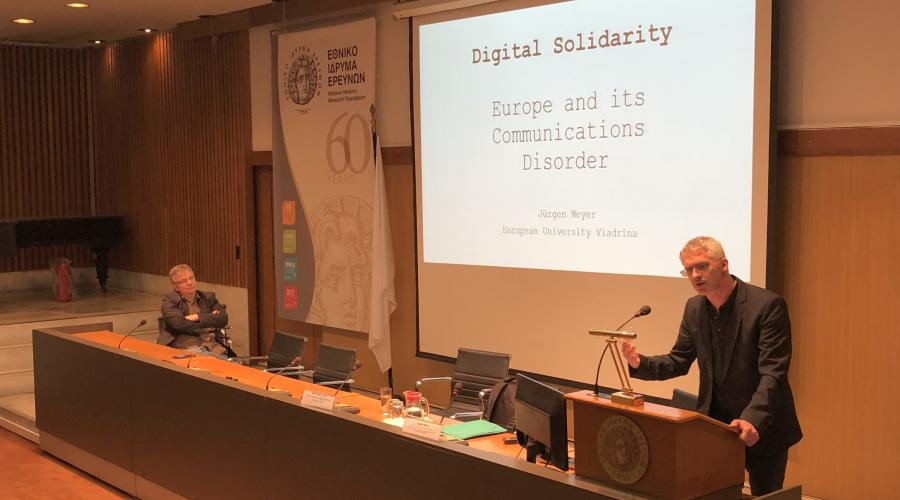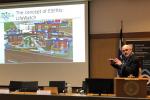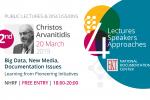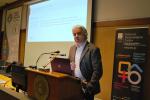
Solidarity between the state and citizens of the EU in the digital era was the focus of Jürgen Neyer, Professor and Vice-President of International Affairs, Director of the Centre for the Internet and Human Rights (CIHR), European University Viadrina, in his talk on April 10, 2019 at the National Hellenic Research Foundation. His interesting lecture ‘Digital Solidarity: Europe and its Communication Disorder’ was given as part of the series of lectures “Big Data, New Media, Documentation Issues: Learning from Pioneering Initiatives' which have been organised by the National Documentation Centre's Scientific Board with the support of Interdepartmental Programme of Graduate Studies in 'Science, Technology, Society-Science and Technology Studies' National and Kapodistrian University of Athens.
Solidarity in the digital era
In his lecture, Professor J. Neyer talked about the concept of solidarity, which he considers to be the adhesive element within a society. The theme of his speech was not the solidarity between the citizens of a state which are connected with cultural, social and other ties, but solidarity in the digital era, which brings together people from different countries and different societies that are not associated with traditional links existing between the citizens of a country.
More specifically, J. Neyer focused on the processes through the solidarity built between the states and the European Union. What happened (or didn’t happen) to prevent Europe becoming a normal community with solidarity among its members?
Analogue and digital communication
J. Neyer connects the answer to the two ways modern societies communicate ; analogue and digital. Although we live at a time we call ‘digital’, data communication is intensely analogue. A key element of the problem presented by J. Neyer is that the two forms of communication have different roles and perform different functions.
Analogue communication is more associated with creating relationships and links between people, it is the emotional part of communication and its contents (eg gestures, laughter) and it is always controversial, needing clarification to be understood by all parties involved in communication. However, digital communication concerns more the transmission of information, is more disciplined and uses strict algorithms associated with bureaucratic issues. Analogue communication creates communities, i.e. places where people share goods, while digital communication builds societies where people exchange goods.
The role of the New Media in the European Union
In the case of the European Union, J. Neyer argues that since the beginning of its existence, the aim was to build a market society and not a community. So it is no coincidence that the Union is very effective at digital communication that can occur between strangers to break through boundaries and different cultures. This is the great power of digital communication and that is why it is an important tool for the convergence of member states in technical matters. An example on a technical level is digital communication associated with the adoption of laws and decrees that set the rules for the operation of the European Union, essential for its existence and constitution. However, this process does not contribute to creating links between states and people who live in them, in other words it does not contribute to the creation of a typical community-based solidarity.
How can solidarity in Europe be built? J.Neyer claims that New Media like Twitter, Facebook, Youtube, Wikipedia, blogs etc. can have a very important role in this. These tools can be used to create a vibrant public sphere, something missing from the European Union over the previous six decades. Nevertheless, the New Media alone are not enough to create solidarity. It is the digital aspect of technology meeting the analogue, creating communities that strive for the same goals that can lead to something changing, the latest example being the student movement ‘Fridays for Future’.
J. Neyer recognises that the New Media is not without problems and that digital communication technologies cannot create for themselves the conditions for the development of solidarity. Without it though, a public sphere cannot be created in which a dialogue can be developed that will bring European citizens closer together in order to build a true European community.















